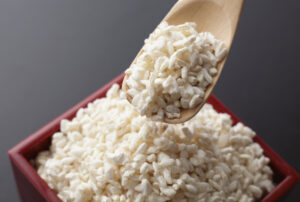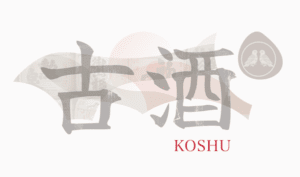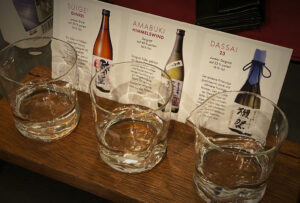Kijōshu - a sweet luxury sake?
Countless types of Sake categories seems to exist - here everything about Kijoshu.
What is Kijōshu?
Kijōshu (貴醸酒) is a sweet sake brewed in a special way.
In its production, part of the water used during the fermentation period is replaced by finished sake. This gives this sake a rich, sweet taste. It is considered a kind of luxury sake, and even in Japan there are few who have ever tasted such a sake. Recently, however, it has become increasingly popular as a dessert wine and as a pairing partner for high-end cuisine.
What does Kijōshu mean and where does it come from?
The word "Kijōshu" translated into German means something like "noble sake".
In the 1970s, French wines and champagnes were the first choice at state banquets and other honored occasions in Japan. Inspired by this, the National Institute of Brewing Research staked its national prestige to develop a more upscale sake. They took noble sweet wines as a reference to create a nobler sake that did not exist on the market before. After much deliberation on how to make a full-bodied, noble-sweet sake, they came up with the idea of brewing it with sake instead of water. As it turned out, this was close to the ancient method described in an ancient document called "Engishiki", which was written about 1000 years ago.
The Kijōshu brewing process
Ordinary sake is brewed by mixing rice and water in a ratio of 100 : 130, while Kijōshu is brewed by mixing rice, water and sake in a ratio of 100, 70 or 60.
Although sake is normally used only in the final stage of the three-stage brewing process, in the three-stage brewing of Kijōshu ("Tome" as it is called), sake is used instead of water in all stages of brewing.
By adding sake instead of Water the fermentation process is slowed down or stopped, so that the sugar that would otherwise be broken down results in a velvety, sweet kijōshu. As sake is used instead of water, the cost of making a kijōshu is higher than usual. For this reason, it is more expensive than ordinary sake and is considered a luxury sake.
What does Kijōshu taste like?
The aromas are complex, with fruity impressions of melon, banana or apricot as well as hints of raisins and nuts, The taste has a concentrated sweetness, rich and smooth. However, it is more acidic than normal sake, which gives it a sweet but surprisingly refreshing aftertaste.
However, there are different types of Kijōshu, from aged-Kijōshu, so to speak, which has been matured for a long time, to new Kijōshu, which is just being squeezed out.
The new Kijōshu is clear and looks just like the regular sake. It tastes like sweet white wine, with a crisp, refreshing taste. On the other hand, aged Kijōshu is more reminiscent of sherry, Madeira, or a fine German wine Trockenauslese than sake. The longer it ages, the deeper the amber color and the more mature the taste.
Some of the Kijōshu are aged for 8 years and can have sake degrees (SMV values) of -44 and acidity of 3.5 (which are very unusual values).
How to drink Kijōshu?
New Kijōshu should be served chilled or on ice as an aperitif or as a food accompaniment, while aged Kijōshu should be served chilled or warmed as a digestif. A more recent trend suggests pouring it over ice cream as a dessert.
More about Japanese cuisine?
All about sake www.sushiya.de/sake

Yeast & Kōji, invisible components of sake production.
So that a first class Sake brewed, it requires not only the right water and a special rice, but also yeast and a very specific noble mold. The Kōji fungus (lat. Aspergillus oryzea) ensures that the starch can be broken down. Various, often specially bred yeasts are then what give the sake a large part of its special flavor and shape the style of the sake.

Koshu - the new trend aged sake
Koshu - the new trend aged sake Table of Contents Aged sake is the latest trend in sake. Here we explain what it

Sake categories
What are the categories & classifications of Japanese sake? Table of contents There are currently around 1,400 sake breweries in Japan and there are